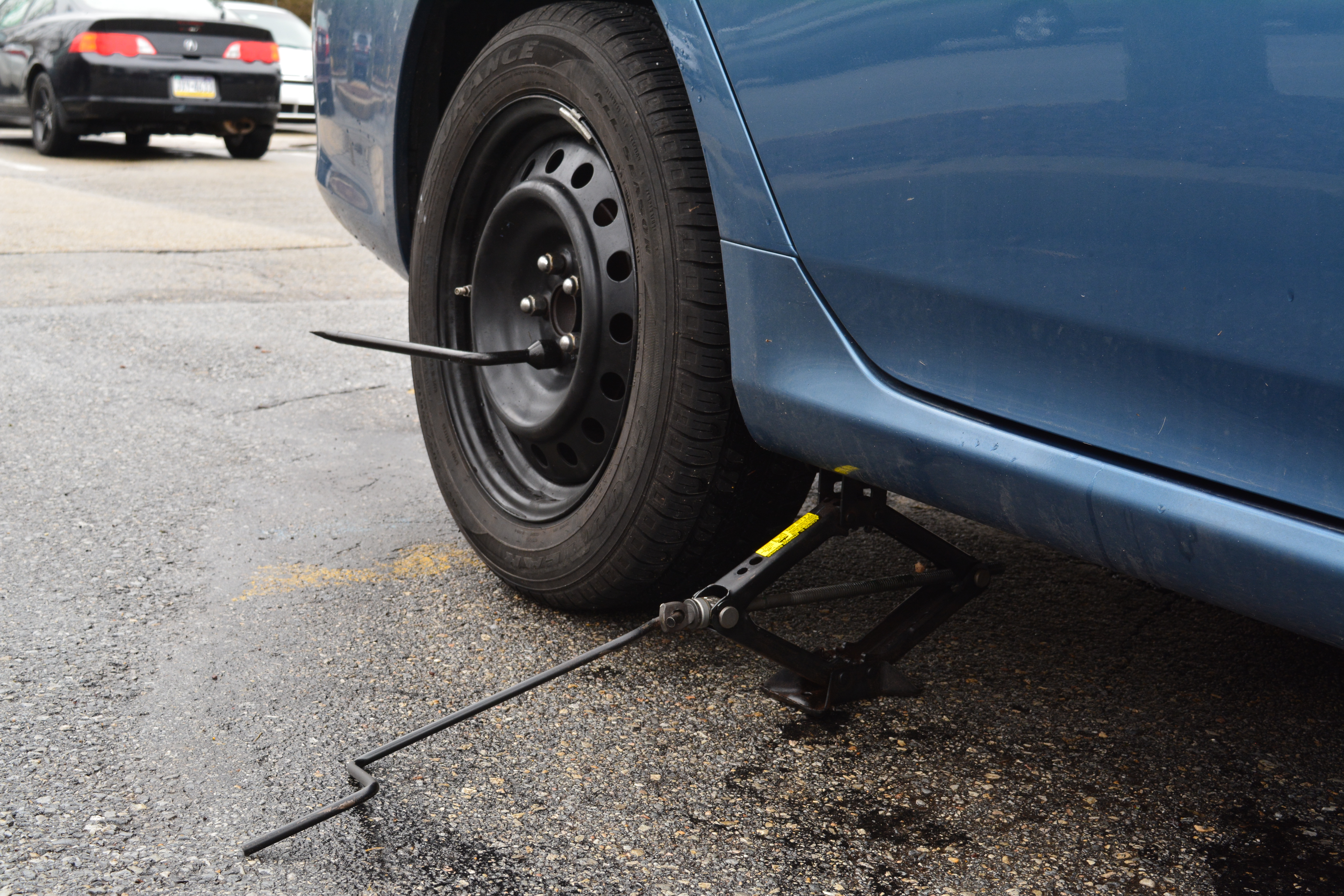Photo courtesy of Kirsten Magas.
Flat tires are my biggest fear and I faced it on Thursday, Feb. 21. While waiting for an auto mechanic to plug up the giant gash a screw had left, I began wondering about the other skills I had yet to learn in my formative years and how I could help other 20-somethings still trying to figure out how to adult.
How to change a tire
Every car comes with a built-in spare and a jack. Locate it. It’s probably in your trunk, under a flimsy trunk liner, like mine. Remove it. Assemble the jack. Usually, it’s a matter of simply attaching a handle. Make sure your jack is aligned with the frame of your vehicle and not the fiberglass. If you try to lift the fiberglass, you will crack it. One you crank the jack—righty tighty, lefty loosey—and your car is lifted, unscrew the bolts that hold your tire in place using the end of the crowbar-looking tool; your tire should fall right off. If it does not, put the bolts back on. Call AAA or slowly drive your car to the nearest auto mechanic. Line up your spare with the screws and do the reverse: screw on the bolts tight using the tool, and use your bodyweight behind it. You’re good to go!
How to be a morning person
When your alarm goes off, don’t press snooze. You will be way more tired if you go back to sleep, trust me. Don’t let your head hit the pillow again. Once you have, you’ve lost. Actually remove yourself from your bed. If it helps, place your alarm across the room to force you to physically get up to turn it off. Make your bed. That’s not essential, but it’ll put you in the right mindset to start the day by organizing at least part of your living space. After you’re dressed, be sure to eat something. Eating boosts your metabolism and you’ll feel more awake. If need be, drink your caffeinated beverage of choice—coffee, tea or Mountain Dew—although, you might crash later. Easier said than done, but waking up earlier is a lot easier when you go to bed earlier. Once you get in the habit, it becomes easier. I wish I followed my own advice when I woke up at 6 a.m. for class. Boy, I don’t miss high school.
How to clean
I don’t mean moving objects in drawers. I don’t mean alphabetizing the bookshelf. I don’t mean tidying. I mean cleaning. Especially in the winter months where we’re most contagious, Lysol or 409 is your best friend. Spray the spots housemates and guests touch the most—doorknobs, light switches, TV remotes—and wipe it down with a paper towel to kill germs. Did you know you can’t just wipe the oven down with Lysol? You need specific cleaner or you can make your own with baking soda and vinegar. Wood should be dusted with a classic feather duster or damp cloth—not Pledge or other cleaners advertised as wood polish. You don’t want to use Lysol or 409 on windows, it’ll leave streaks. Use a glass cleaner, like Windex instead—glass cleaners can double as a way to get your jewelry back to its original shine.
How to cook meat
Cooking meat for the first time is scary. “Salmonella” is a word you hope to never hear paired with “poisoning.” When you poke your cooked poultry with a fork, the juices should run clear. If the juices run pink, it’s not done. If you’re dealing with fish, poke your fork in and twist. If the meat is flaky and it falls apart, it’s done. If it’s not flaky, cook it a bit longer. Steak is a bit trickier because there is a range of acceptable options: well done, medium well, medium rare and rare. It’s always better to err on the side of caution and cook it a little past what you hope it to be. Better safe than sorry. Not to mention, there are recommended temperatures on the FDA website for each type of meat: 145 degrees for beef, pork and fish; 160 degrees for ground beef; and 165 degrees for poultry.
How to perform the Heimlich maneuver on animals
My dog was choking on a small piece of plastic in the midst of settling into our new house. I recently was trained in first aid for humans. How much different could it be? I hit between what would be the equivalent of the shoulder blades. Seeing that it did little, I applied a bit of pressure to her stomach, just behind her ribcage. I did the sort of scooping motion I would on a human and she began coughing. Turns out, this was the right thing to do! I scooped out the plastic piece quick—this is probably the most important because animals are dumb enough to try to swallow the object they were choking on again. I recognized her panic and coughing. Other signs of choking could be pawing at their mouth or strange behavior. In my house, if there’s a lack of barking, there must be something wrong. I’ve had to call animal poison control for my dog too. It’s a good idea to keep their number handy as well: 888-426-4435.
Kirsten Magas is a third-year student majoring in English with minors in biology and creative writing. KM867219@wcupa.edu

